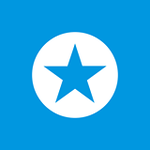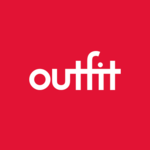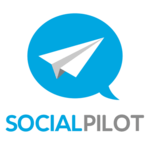Description

Frontify

Mention
Comprehensive Overview: Frontify vs Mention
Frontify and Mention are both software solutions that cater to businesses, but they serve different primary functions and target markets. Here's a detailed overview of each:
Frontify
a) Primary Functions and Target Markets
- Primary Functions: Frontify is primarily a brand management platform. It provides tools for creating brand guidelines, managing digital assets, and ensuring consistency in brand representation across various channels. Features include brand guidelines creation, digital asset management, collaboration tools, and design systems.
- Target Markets: Frontify targets medium to large enterprises that need robust brand management solutions, particularly in sectors like marketing, design, and communications. Industries that prioritize strong brand representation, such as fashion, technology, and consumer goods, are typical customers.
b) Market Share and User Base
- Frontify is not a mass-market product but serves a specific niche with its specialized tools. Its user base consists of corporate design and marketing teams who need to maintain brand consistency. While exact market share figures are hard to quantify, Frontify is a recognized player in the brand management market, competing with other niche solutions like Bynder and Widen.
c) Key Differentiating Factors
- Specialization in Brand Management: Frontify offers comprehensive tools focused solely on brand management, which differentiates it from other more general digital asset management platforms.
- Collaboration Features: It provides robust collaboration features for cross-team work, making it easier for global teams to maintain brand cohesiveness.
Mention
a) Primary Functions and Target Markets
- Primary Functions: Mention is a media monitoring and social listening tool that helps businesses track brand mentions across various media channels, including social media, blogs, and forums. It offers features like keyword tracking, sentiment analysis, and competitor analysis.
- Target Markets: Mention serves businesses of all sizes that need to monitor their online presence, reputation, and engagement. It's commonly used by marketing departments, PR agencies, and brand managers across a broad spectrum of industries.
b) Market Share and User Base
- Mention competes in the social media listening and brand monitoring space, which is quite competitive. It has a significant user base among businesses that prioritize real-time monitoring of brand mentions. Its main competitors include tools like Hootsuite, Brandwatch, and Meltwater, which have varying market shares in this arena.
c) Key Differentiating Factors
- Real-Time Monitoring: Mention offers real-time tracking and alerts for brand mentions, providing immediate insights that some competitors might delay.
- User-Friendly Interface: It is often praised for its ease of use and intuitive interface, which is particularly appealing to small and medium-sized enterprises (SMEs) that might not have dedicated social media analysts.
Comparison and Differentiation
- Different Core Functions: Frontify focuses on brand consistency and internal brand management, whereas Mention provides external brand monitoring and social listening.
- Different Target Audiences: While both serve businesses interested in brand management, Frontify targets internal branding teams, and Mention targets external PR and marketing activities.
- Integration and Use Case: Both platforms can be integrated into broader marketing strategies but serve different steps in the brand lifecycle—Frontify for internal brand development and governance, and Mention for external reputation management.
In summary, while Frontify and Mention both serve aspects of brand management, they cater to different needs and stages in the brand management process, highlighting their unique positions in the market.
Contact Info

Year founded :
2013
+41 71 220 11 21
Not Available
Switzerland
http://www.linkedin.com/company/frontify

Year founded :
2018
Not Available
Not Available
Egypt
Not Available
Feature Similarity Breakdown: Frontify, Mention
Frontify and Mention are tools that serve different primary purposes, but they may share some overlapping features as they both cater to branding and marketing needs. Below is a breakdown of their features and user interface comparisons:
a) Core Features in Common
While Frontify and Mention are fundamentally different tools (Frontify focuses on brand management and Mention on social media monitoring), they may share some features related to collaboration and asset management:
-
Collaboration Tools:
- Both platforms likely include collaboration features where teams can work together, provide feedback, and manage workflows efficiently.
-
Asset Management:
- Frontify provides robust asset management for brand resources, and Mention might allow for the management of marketing content that can align with brand guidelines.
-
Analytics and Reporting:
- While geared differently, both platforms offer analytics. Frontify may provide insights on brand usage and consistency, and Mention offers social media analytics to understand brand mentions and engagements.
-
Integrations:
- They both might offer integrations with other marketing and productivity tools to streamline workflows.
b) User Interface Comparison
-
Frontify:
- Typically designed with brand managers in mind, Frontify offers a clean and intuitive interface focused on brand guidelines, asset libraries, and collaborative projects. It emphasizes ease of use for non-technical users and teams interested in maintaining brand consistency.
-
Mention:
- The interface for Mention is likely more focused on real-time data, dashboards, and alerts. It is designed to monitor, analyze, and report on brand mentions across social media, blogs, and other platforms. The interface is data-rich and designed for marketers who need to respond quickly to social media trends.
c) Unique Features
Frontify:
- Brand Guidelines: Frontify is renowned for its ability to create and manage comprehensive brand guidelines that include typography, color palettes, and logo usage.
- Digital Asset Management (DAM): Offers a sophisticated DAM system tailored for brand resources.
- Web-Based Brand Portal: A centralized hub for all brand-related resources accessible to all stakeholders.
Mention:
- Real-Time Social Listening: Mention excels at providing real-time monitoring of social media channels with instantaneous alerts on brand mentions.
- Sentiment Analysis: Offers tools for sentiment analysis to gauge public perception and mood.
- Influencer Identification: Enables users to discover and connect with influencers who can elevate their brand.
In summary, while there are some shared functionalities in aspects like collaboration and integration, Frontify and Mention are distinct in their core functionalities, catering to different aspects of brand management and social media monitoring.
Features

Not Available

Not Available
Best Fit Use Cases: Frontify, Mention
Frontify and Mention are two distinct platforms serving different business needs. Here's an overview of their best fit use cases:
Frontify
a) For what types of businesses or projects is Frontify the best choice?
Frontify is a brand management platform designed to help businesses streamline brand-related tasks. It is the best choice for:
- Brand-Driven Organizations: Companies with a strong emphasis on brand identity, such as those in the fashion, retail, or consumer goods industries.
- Marketing and Design Teams: Organizations with a focus on design consistency and high brand standards, where multiple team members need access to brand assets.
- Organizations with Multiple Brands or Sub-Brands: Companies managing diverse product lines or multinational brands benefit from centralized brand management.
- Creative Agencies: Agencies that handle multiple clients' branding needs can utilize Frontify to maintain brand consistency across different projects.
d) How does Frontify cater to different industry verticals or company sizes?
Frontify offers scalable solutions that cater to small startups as well as large enterprises. For small companies, it provides an easy-to-use interface to manage nascent brands. For larger organizations, it offers advanced features like customizable brand guidelines, collaborative design tools, and asset management systems, which are useful across various industries such as manufacturing, media, and technology.
Mention
b) In what scenarios would Mention be the preferred option?
Mention is a social media listening and monitoring tool that empowers businesses to track discussions across online platforms. It is preferred in scenarios such as:
- Public Relations and Communication Teams: Businesses focused on managing their online presence, tracking brand mentions, and responding to customer feedback promptly.
- Marketing Teams: Companies that want to analyze social media sentiment, track competitors, and identify influencers for collaboration.
- Crisis Management Situations: Organizations that need real-time alerts about issues or discussions that could potentially impact their brand reputation.
- Content Strategists and SEO Teams: Using Mention to discover trending topics and uncover new content ideas can be beneficial.
d) How does Mention cater to different industry verticals or company sizes?
Mention provides powerful yet flexible solutions suitable for small businesses and large corporations. It serves industries such as hospitality, entertainment, and technology by offering insights into social media dynamics. Smaller companies benefit from its cost-effective monitoring capabilities, while larger enterprises can take advantage of its comprehensive reporting and analytics features to integrate social data into broader marketing strategies.
In summary, Frontify is ideal for companies prioritizing brand consistency and asset management, while Mention excels in environments where brand monitoring and media listening are critical for business success. Both platforms offer flexible solutions tailored to various industries and company sizes.
Pricing

Pricing Not Available

Pricing Not Available
Metrics History
Metrics History
Comparing teamSize across companies
Conclusion & Final Verdict: Frontify vs Mention
To provide a conclusion and final verdict for Frontify and Mention, it's essential to evaluate each product's value proposition, pros and cons, and potential recommendations based on user needs. Here’s a detailed analysis:
a) Best Overall Value
Frontify vs Mention:
- Frontify is a brand management and collaboration platform designed to help teams maintain consistency in branding. It offers tools for brand guidelines, asset management, and creative collaboration.
- Mention focuses on social media monitoring and listening, helping businesses track their brand reputation, competitor activities, and market trends.
Best Overall Value: The best overall value depends significantly on what a user is seeking. If brand consistency and asset management are top priorities, Frontify offers more substantial advantages. Meanwhile, for those prioritizing brand monitoring and market analysis, Mention provides greater value.
b) Pros and Cons
Frontify:
-
Pros:
- Comprehensive brand management tools that centralize assets and guidelines.
- Enhances collaboration with design tools and templates.
- User-friendly interface suitable for teams of various sizes.
- Integrates well with other tools used in creative and marketing workflows.
-
Cons:
- May be overkill for smaller businesses with no dedicated brand team.
- Higher cost compared to simpler asset management solutions.
- Learning curve for users not accustomed to brand management platforms.
Mention:
-
Pros:
- Effective for real-time social media and web monitoring.
- Facilitates reputation management and competitive analysis.
- Supports multiple languages and wide coverage across social and web platforms.
- Allows for identifying trends and gathering customer insights.
-
Cons:
- Less suitable if you need robust brand asset management features.
- Pricing can be high for full-featured plans.
- Noise in alerts and data might require manual filtering.
c) Recommendations
Specific Recommendations:
- Frontify is ideal for users who are primarily focused on maintaining brand consistency and managing creative assets. It suits larger teams with a dedicated role or department for brand management.
- Mention is best for individuals or businesses needing vigilant monitoring of their online reputation and real-time insights into brand mentions. It's particularly useful for marketing teams focused on social media.
For users deciding between Frontify and Mention:
- Assess your primary needs: If internal brand consistency and asset management are your priorities, consider Frontify. If online presence tracking and competitor monitoring are crucial, Mention might be more appropriate.
- Consider team size and budget: Frontify could require a steeper investment in both time and resources, while Mention’s value aligns with ongoing monitoring efforts.
- Trial both if possible: Testing both platforms can provide practical insights, allowing users to understand which interface and capabilities resonate more with their workflow and needs.
In conclusion, the choice between Frontify and Mention hinges largely on what facet of brand management or monitoring is more relevant to the user's goals. Each platform offers distinct advantages aligned with different aspects of brand strategy.
Add to compare
Add similar companies


